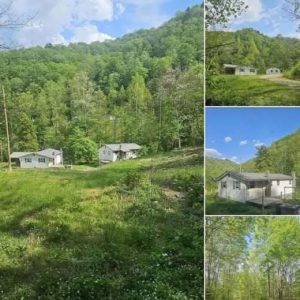When John Sims purchased a friend’s home in Tucson, Arizona, he didn’t expect the property to come with a mystery. But shortly after moving in, he heard a strange rumor—something was buried in the yard. Intrigued, John began looking into the property’s history and uncovered a building permit from 1961. It revealed that Whitaker Pools, a company active during the Cold War, had constructed a structure there.
Determined to find out more, John hired metal detector experts to scan the yard. After a thorough search, the team located a metal hatch hidden three feet underground. Excited by the discovery, John and a few helpers carefully dug it up. Once opened, they found a well-preserved underground shelter, complete with reinforced walls and sealed entryways.
The structure turned out to be a nuclear bomb shelter—built during the height of Cold War tensions, when many Americans feared a possible Soviet attack. John added lighting and strengthened the entrance to make it safe to explore. Inside, he found original fixtures and layout features designed for survival during a nuclear event.
John posted pictures and videos of the shelter online, and the response was overwhelming. His story quickly went viral, and people from around the country began sharing similar discoveries. Other Tucson residents even reported finding shelters on their properties, many of them also built by Whitaker Pools in the early 1960s.
The widespread attention sparked a renewed local interest in Cold War history. For John, the shelter became more than a curiosity—it was a unique window into the past. Recognizing its educational value, he decided to restore and preserve it, turning it into a private Cold War museum open for community visits.
Today, what began as a rumor turned into a rare historical find. John Sims’ backyard shelter now serves as a reminder of a time when fear shaped the very foundations of American homes. His discovery sheds light on an era of paranoia, preparedness, and the lengths people once went to feel safe.





